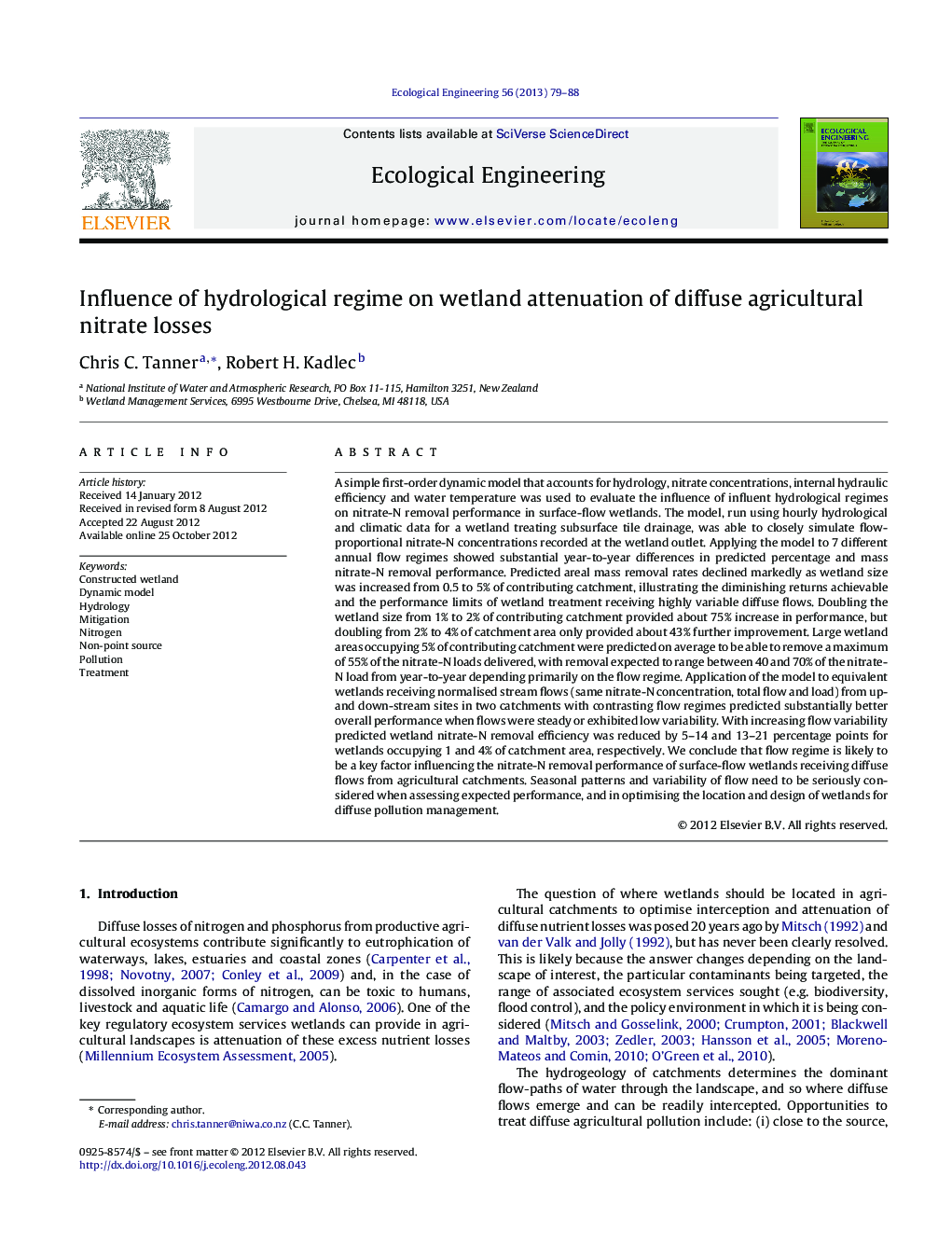| Article ID | Journal | Published Year | Pages | File Type |
|---|---|---|---|---|
| 4389652 | Ecological Engineering | 2013 | 10 Pages |
A simple first-order dynamic model that accounts for hydrology, nitrate concentrations, internal hydraulic efficiency and water temperature was used to evaluate the influence of influent hydrological regimes on nitrate-N removal performance in surface-flow wetlands. The model, run using hourly hydrological and climatic data for a wetland treating subsurface tile drainage, was able to closely simulate flow-proportional nitrate-N concentrations recorded at the wetland outlet. Applying the model to 7 different annual flow regimes showed substantial year-to-year differences in predicted percentage and mass nitrate-N removal performance. Predicted areal mass removal rates declined markedly as wetland size was increased from 0.5 to 5% of contributing catchment, illustrating the diminishing returns achievable and the performance limits of wetland treatment receiving highly variable diffuse flows. Doubling the wetland size from 1% to 2% of contributing catchment provided about 75% increase in performance, but doubling from 2% to 4% of catchment area only provided about 43% further improvement. Large wetland areas occupying 5% of contributing catchment were predicted on average to be able to remove a maximum of 55% of the nitrate-N loads delivered, with removal expected to range between 40 and 70% of the nitrate-N load from year-to-year depending primarily on the flow regime. Application of the model to equivalent wetlands receiving normalised stream flows (same nitrate-N concentration, total flow and load) from up- and down-stream sites in two catchments with contrasting flow regimes predicted substantially better overall performance when flows were steady or exhibited low variability. With increasing flow variability predicted wetland nitrate-N removal efficiency was reduced by 5–14 and 13–21 percentage points for wetlands occupying 1 and 4% of catchment area, respectively. We conclude that flow regime is likely to be a key factor influencing the nitrate-N removal performance of surface-flow wetlands receiving diffuse flows from agricultural catchments. Seasonal patterns and variability of flow need to be seriously considered when assessing expected performance, and in optimising the location and design of wetlands for diffuse pollution management.
